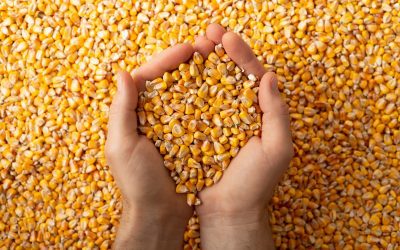Key considerations before starting the cover crop journey
Posted: May 3, 2023
Category:
ICGA, Indiana Corn and Soybean Post - Spring 2023, News
A successful crop year begins in the soil. Changing practices on the farm is never easy, and before setting forth on a cover crop journey, there are some key considerations to ensure your approach to cover crop implementation is set up for success.
Maintaining vegetative cover whenever possible supports soil health and prevents soil movement, providing many of those positive environmental benefits you may seek. Planting cover crops offers improvements in soil erosion and water quality. Cover crop management can allow you to adapt to your seasonal weather conditions, aid in crop protection, and increase soil health.
In addition to soil health benefits, cover crops can be a key management strategy to leverage the new opportunities available through emerging sustainability marketplaces. Every farm is different, so before diving right into planting cover crops, you may want to consider the following:
- Farm Management Strategy — Do you have a farm management challenge that can be solved with cover crops? Cover crops can help reduce compaction by getting air and water deeper into the soil through their roots. What about weed pressure? Cover crops can reduce weed pressure by acting as mulch that suppresses weeds and disrupts conditions for weed seed germination.
- Start Small — Increase the scale of your cover crop practice as you get more comfortable. To start, pick a field that is easy to monitor or an area that needs improvement and focus your cover crop planting there.
- Make Informed Decisions — Conduct research and talk with reliable sources before introducing cover crops into your farm management plan. Field days are a great opportunity to speak with a variety of experts in the field or talk to other farmers using cover crops. Great resources also include universities, agronomists and online forums.
- Expenses — Consider additional expenses, including seed selection and labor.
- Timing — Be timely with planting and scout early and often.
- Results — You may not see immediate results from planting cover crops because they are primarily planted for long-term benefits to the soil. There will be challenges and opportunities to try different methods to figure out what will benefit the farm most in the long term.
Planting cover crops is a cost-effective tool to increase on-farm sustainability and build upon soil resiliency for
increased crop production.
As more consumers base purchasing decisions on a product’s sustainability, buyers across supply chains are
increasingly sourcing sustainable ingredients that meet consumer preferences. Cover crops are one example of how you can demonstrate commitment to continuous improvement.
Farmers for Soil Health is a partnership between many commodity organizations — the soy checkoff, Pork Checkoff and National Corn Growers Association — to create a farmer-led initiative that advances the use of soil health practices, meets sustainability goals and improves farmer profitability. Today, cover crops are only used on about 6 percent of U.S. cropland. Farmers for Soil Health hopes to improve soil health by encouraging farmers to expand adoption of cover crops to 30 million acres by 2030.
Farmers for Soil Health will support state commodity groups as they provide technical assistance to farmers as
they plant and maintain cover crops. Farmers for Soil Health will also establish a new financial assistance program to incentivize cover crop adoption on over 1.3 million acres of crop fields in corn and soybean production in 20 states.
To learn more about the Farmers for Soil Health cover crop initiative, visit FarmersForSoilHealth.com.



